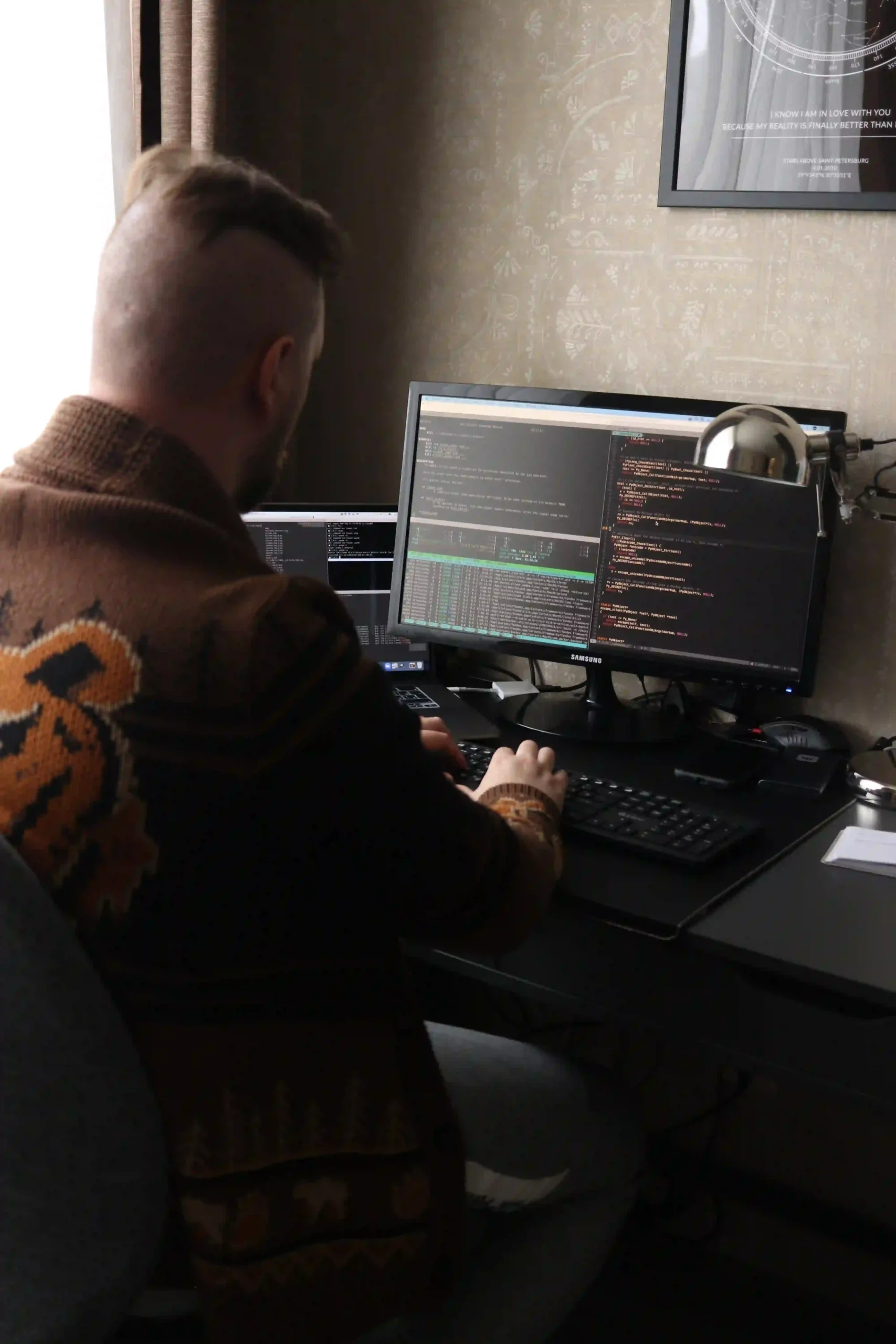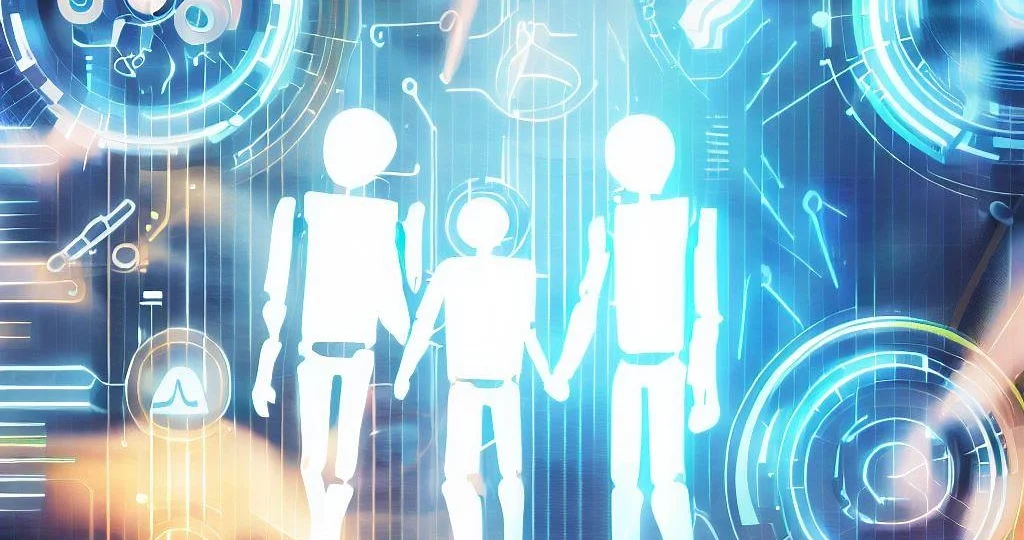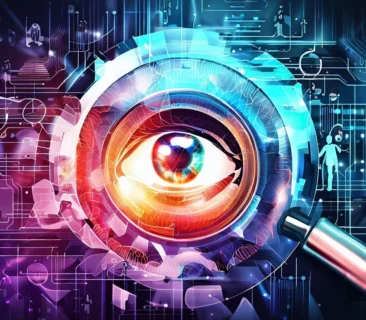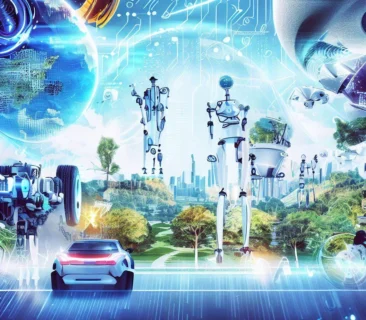Introduction:
In an era where technological advancements are reshaping the very fabric of our daily lives, the workplace stands as a crucible of transformation. “Human AI Collaboration and the Workplace of the Future” is not just a buzzworthy phrase; it’s the driving force behind a new era of productivity, efficiency, and innovation.
As we journey further into the 21st century, the convergence of human ingenuity and artificial intelligence capabilities is redefining how we work, communicate, and create value. This article serves as your compass in this brave new world, guiding you through the uncharted territory of Human AI collaboration and its profound implications for the modern workplace.
Buckle up as we embark on a captivating exploration of how the symbiotic relationship between humans and AI is shaping the future of work. We’ll delve into real-world examples, dissect the challenges, and unveil the strategies for thriving in this dynamic landscape. Welcome to the future-ready workplaces, where Human AI collaboration isn’t just a concept; it’s the cornerstone of innovation and success.
Redefining Collaboration:
In today’s rapidly changing work environment, collaboration has taken on a whole new meaning. It’s no longer just about people working together; it’s about people teaming up with intelligent machines. This partnership between humans and AI, often referred to as Human AI collaboration, is revolutionizing the way we accomplish tasks and solve problems.
Imagine a scenario where a medical team is diagnosing a complex illness. In the past, it relied solely on the expertise of doctors and medical staff. But now, with the assistance of AI-powered diagnostic tools, they can analyze vast amounts of patient data in a fraction of the time. This collaboration between doctors and AI not only accelerates the diagnosis but also enhances its accuracy.
One of the remarkable aspects of Human AI collaboration is the ability to complement each other’s strengths. While humans excel at empathy, creativity, and complex decision-making, AI systems are masters of data processing, pattern recognition, and rapid information retrieval. By combining these abilities, we create a synergy that outperforms what either humans or AI could achieve on their own.
This collaborative approach is not confined to a single industry. Whether you’re in healthcare, finance, manufacturing, or even creative fields like art and music, Human AI partnerships are becoming increasingly prevalent. In the world of customer service, for instance, AI chatbots work alongside human agents to provide quick and accurate responses to customer inquiries. This not only improves customer satisfaction but also allows human agents to focus on more complex issues that require human touch.
The beauty of Human AI collaboration lies in its adaptability. AI systems can be trained to understand and mimic human behaviors, making interactions with machines feel more natural. This means that employees in various sectors can seamlessly integrate AI into their daily routines without the need for extensive retraining.
However, as with any innovation, challenges and concerns accompany this transformative shift. Questions about job displacement, data privacy, and ethical considerations are raised. In the next sections of this article, we’ll delve deeper into these issues and explore how they can be addressed to ensure a harmonious coexistence between humans and AI in the workplace.
In summary, the concept of Human AI collaboration is not science fiction; it’s a reality that is reshaping how we work and solve problems. By harnessing the strengths of both humans and AI, we’re opening up new frontiers of efficiency and innovation across various industries.
Enhancing Efficiency:
In the workplace of the future, efficiency is the name of the game. Thanks to Human AI collaboration, efficiency levels are soaring to new heights, making tasks smoother and faster.
Imagine you’re a project manager overseeing a complex construction project. In the past, managing resources, timelines, and budgets was a Herculean task. But with AI-powered project management tools, you have a digital assistant that can analyze data, detect potential delays, and even suggest cost-saving measures. This not only reduces the risk of errors but also allows you to make informed decisions swiftly.
Now, let’s shift our focus to customer support. In traditional setups, customers often had to wait in long queues to get assistance. However, with AI-driven chatbots and virtual assistants, customers can get immediate responses to their queries, 24/7. This not only improves customer satisfaction but also frees up human agents to tackle more complex issues that require their expertise.
Efficiency gains extend to manufacturing as well. AI-powered robots can perform repetitive and physically demanding tasks with precision and consistency. This not only reduces the risk of workplace injuries but also increases production output, meeting market demands effectively.
Furthermore, AI can sift through mountains of data in seconds, identifying trends and patterns that humans might overlook. In the financial industry, for example, AI algorithms can detect fraudulent transactions with remarkable accuracy, safeguarding financial institutions and their clients.
But perhaps the most significant benefit of enhanced efficiency is the gift of time. With AI handling routine and time-consuming tasks, employees can redirect their focus towards creative problem-solving, innovation, and building stronger relationships with customers and colleagues. This not only makes work more enjoyable but also unleashes the full potential of human intelligence.
Of course, it’s important to mention that the adoption of AI in the workplace isn’t without its challenges. Some worry about job displacement as certain tasks become automated. However, history has shown that technology tends to create new opportunities and jobs, even as it changes existing ones. It’s crucial for organizations to invest in reskilling and upskilling their workforce to adapt to this evolving landscape.
Moreover, data security and privacy concerns must be addressed. As AI systems process vast amounts of data, it’s vital to ensure that sensitive information is handled with the utmost care and compliance with regulations.
In conclusion, Human AI collaboration is a powerful catalyst for enhancing efficiency in the workplace. By leveraging AI’s strengths in data analysis, automation, and rapid decision-making, we can optimize operations, improve customer experiences, and empower employees to focus on tasks that truly require the human touch. The future of work is bright, with AI as our trusted ally in achieving greater efficiency and productivity.
Skills for Tomorrow:
As the workplace evolves with Human AI collaboration, so do the skills required to thrive in this new landscape. It’s crucial for individuals and organizations to adapt and develop the right skills.
1. Digital Literacy:
The ability to navigate digital tools and platforms is a fundamental skill. Understanding how to use AI-powered software and analyze data is becoming as important as traditional computer skills.
2. Adaptability:
Embracing change is key. With AI constantly evolving, individuals need to be open to learning new technologies and methodologies to stay relevant.
3. Problem-Solving:
While AI can handle routine tasks, humans excel at complex problem-solving. Developing strong critical thinking and analytical skills will be in high demand.
4. Emotional Intelligence:
Human AI collaboration doesn’t mean less human interaction. In fact, emotional intelligence, the ability to understand and manage emotions, becomes even more valuable in this context.
5. Creativity:
AI can assist in creative tasks, but the spark of innovation often comes from human imagination. Cultivating creativity will set individuals apart.
6. Data Literacy:
With AI’s data-driven nature, knowing how to work with data is a must. This includes data analysis, interpretation, and ensuring data privacy.
7. Ethical Awareness:
Understanding the ethical implications of AI and making responsible decisions is vital. This includes issues like bias in AI algorithms and privacy concerns.
8. Communication Skills:
Effective communication remains crucial, whether interacting with AI or collaborating with human colleagues. Clear and concise communication will be highly valued.
9. Tech-Savviness:
Staying updated on the latest tech trends and tools is essential. Continuous learning and keeping up with industry changes are key.
10. Teamwork:
Human AI collaboration often involves working in interdisciplinary teams. Being able to collaborate effectively with both humans and machines is a valuable skill.
It’s important to note that these skills are not only relevant to employees but also to employers. Organizations need to foster a culture of learning and development, supporting their workforce in acquiring these skills. As the workplace transforms, those who invest in skill development will be better prepared to thrive in the age of Human AI collaboration.
Challenges and Solutions:

While Human AI collaboration offers incredible potential, it’s not without its challenges. Let’s explore some of these challenges and the strategies to overcome them.
1. Job Displacement:
One of the primary concerns is the fear that AI will replace jobs. While certain tasks may become automated, the emphasis shifts to reskilling and upskilling the workforce for higher-value roles that require human judgment, creativity, and emotional intelligence.
2. Data Privacy:
As AI relies on data, protecting individual privacy becomes crucial. Solutions involve strict data governance, transparent data usage policies, and robust security measures to ensure data is handled responsibly.
3. Bias in AI:
AI systems can inherit biases from the data they are trained on, leading to unfair or discriminatory outcomes. Addressing this challenge involves careful data curation, ongoing monitoring, and bias mitigation techniques.
4. Ethical Dilemmas:
Ethical questions surrounding AI and its impact on society must be addressed. Establishing ethical guidelines, industry standards, and involving ethicists in AI development are steps towards responsible AI deployment.
5. Resistance to Change:
Employees may resist AI integration due to fear or uncertainty. Organizations can address this challenge by involving employees in the adoption process, providing training, and demonstrating the benefits of Human AI collaboration.
6. Cost and Implementation:
Implementing AI technologies can be expensive and complex. Companies can navigate this challenge by conducting thorough cost-benefit analyses, starting with smaller AI projects, and gradually scaling up.
7. Interoperability:
Ensuring that different AI systems can work together seamlessly is critical. Developing open standards and protocols for AI integration can resolve this issue.
8. Legal and Regulatory Hurdles:
AI is subject to various legal and regulatory frameworks. Staying compliant with these regulations and advocating for AI-friendly policies are essential for organizations.
9. Transparency:
Lack of transparency in AI decision-making can be a concern. Organizations can address this by providing explanations for AI-generated outcomes and making the decision-making process more understandable.
10. Human AI Trust:
Building trust in AI systems is vital. This involves demonstrating the reliability and fairness of AI, as well as providing clear channels for feedback and recourse in case of errors.
In overcoming these challenges, collaboration between stakeholders, including government bodies, businesses, and tech experts, is crucial. By addressing these concerns proactively, we can harness the full potential of Human AI collaboration while ensuring it benefits society at large. The road ahead is not without obstacles, but with careful planning and a commitment to ethical and responsible AI usage, we can navigate this transformative journey successfully.
Case Studies:
Let’s take a closer look at real-world examples of how Human AI collaboration is making a tangible impact across various industries:
1. Healthcare:
In the medical field, AI-powered diagnostic tools are revolutionizing disease detection. For instance, IBM’s Watson for Oncology analyzes vast amounts of medical literature and patient data to assist oncologists in making personalized treatment recommendations. This not only saves time but also improves treatment outcomes.
2. Finance:
In the financial sector, robo-advisors like Betterment and Wealthfront use AI algorithms to manage investment portfolios. These systems consider an individual’s financial goals and risk tolerance to make investment decisions, often with lower fees than traditional financial advisors.
3. Manufacturing:
Smart factories are leveraging AI-driven robots and sensors to optimize production processes. For example, Tesla’s Gigafactories use AI to monitor and control the production line, ensuring high-quality and efficient manufacturing.
4. Customer Service:
AI chatbots, such as those used by Amazon and Apple, provide instant assistance to customers. They can answer frequently asked questions, troubleshoot technical issues, and even handle basic transactions, freeing up human agents to handle more complex inquiries.
5. Content Creation:
In creative fields, AI is aiding content creation. The Associated Press uses Automated Insights’ Wordsmith to generate news articles on topics like corporate earnings reports. This allows journalists to focus on in-depth reporting while AI handles routine updates.
6. Education:
AI-driven tutoring systems like Khan Academy and Duolingo adapt to individual student needs, providing personalized learning experiences. They can identify areas where students struggle and offer additional support, enhancing the learning process.
7. Retail:
AI-powered recommendation engines, as seen on platforms like Amazon and Netflix, analyze user behavior to suggest products or content tailored to individual preferences. This not only enhances the user experience but also boosts sales and engagement.
8. Transportation:
Autonomous vehicles, from self-driving cars to drones, rely heavily on AI for navigation and decision-making. Companies like Waymo and Uber are at the forefront of developing these technologies, aiming to improve transportation safety and efficiency.
These case studies highlight the versatility of Human AI collaboration and its transformative effects on various sectors. While each example differs in its application, they all share the common thread of augmenting human capabilities with AI-driven tools, resulting in increased efficiency, improved decision-making, and enhanced user experiences. As we continue to witness these successes, it becomes evident that Human AI collaboration is not just a concept but a reality that is reshaping industries worldwide.
Conclusion:
In the ever-evolving landscape of work, Human AI collaboration emerges as a beacon of innovation and transformation. We’ve journeyed through the realms of redefined collaboration, enhanced efficiency, vital skills, challenges, and inspiring case studies that underscore the incredible potential of this partnership.
As we conclude this exploration, it’s evident that Human AI collaboration is not a distant dream but a present reality. It’s reshaping industries, improving decision-making, and unlocking new possibilities. While challenges persist, the commitment to ethical and responsible AI usage, along with reskilling efforts, can pave the way for a harmonious coexistence between humans and machines.
The workplace of the future beckons us to embrace change, adapt, and cultivate the skills needed to thrive in this dynamic environment. Whether you’re a healthcare professional, a financial advisor, an educator, or anyone in between, Human AI collaboration has the potential to elevate your capabilities and redefine what’s possible.
In closing, the journey towards the workplace of the future is not a solitary one but a collaborative venture, where humans and AI stand shoulder to shoulder, shaping a future that promises efficiency, innovation, and endless opportunities. The future is here, and it’s a place where human ingenuity and artificial intelligence converge, creating a world of boundless potential. Embrace it, and together, we’ll redefine the future of work.




